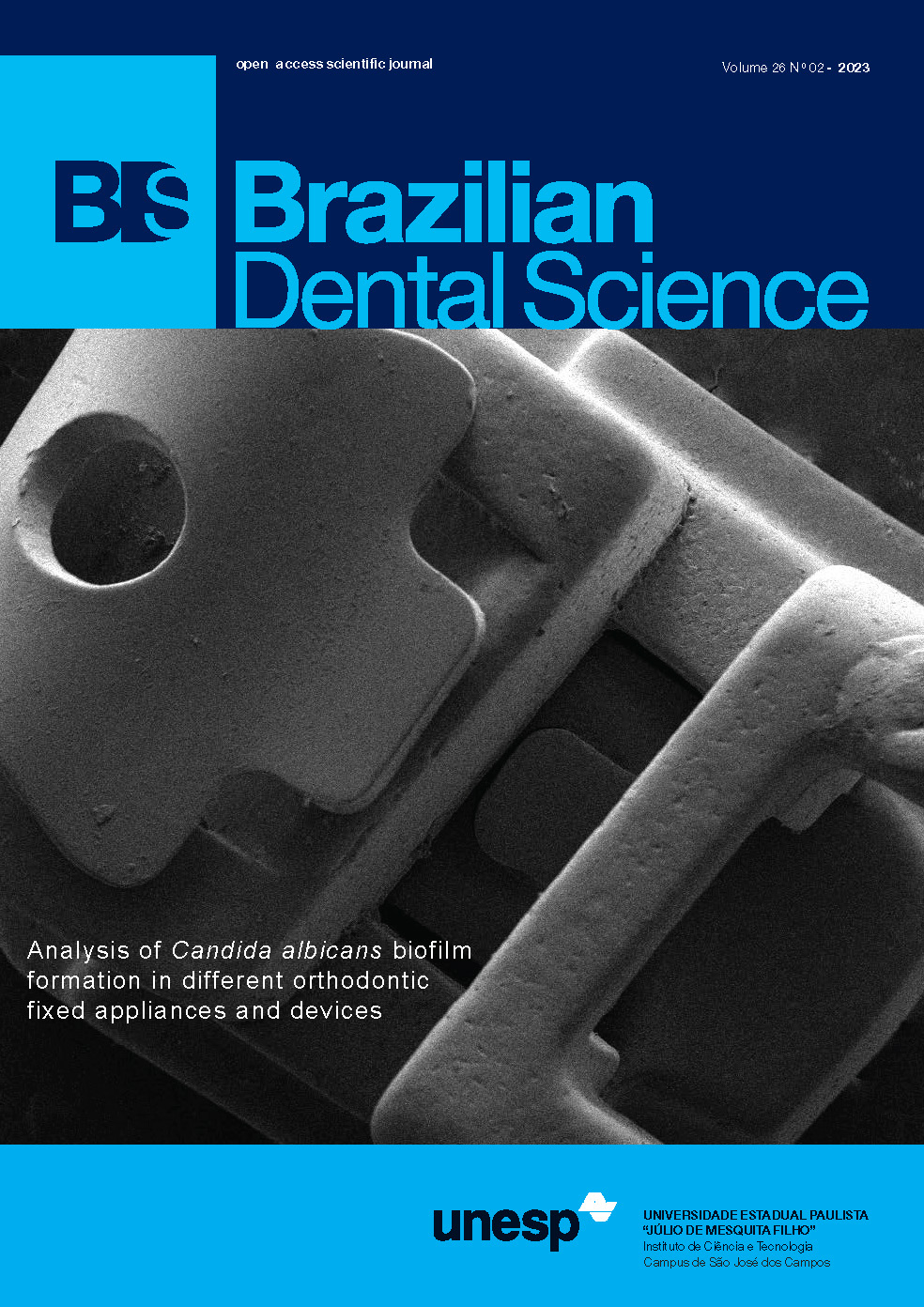Mechanical behavior of implant-supported full-arch prostheses in different locations in the maxilla: 3D-FEA and strain gauge analysis
DOI:
https://doi.org/10.4322/bds.2023.e3771Abstract
The maxillary bone restriction can limit the implants position to support a full-arch prosthesis. Objective: Therefore, this study evaluated the biomechanical behavior of a full-arch prosthesis supported by six implants in different configurations: group A (implants inserted in the region of canines, first premolars and second molars), group B (implants inserted in the region of first premolar, first molar and second molar) and group C (implants in second premolar, first premolar and second molar). Material and Methods: The models were analyzed by the finite element method validated by strain gauge. Three types of loads were applied: in the central incisors, first premolars and second molars, obtaining results of von-Mises stress peaks and microstrain. All registered results reported higher stress concentration in the prosthesis of all groups, with group C presenting higher values in all structures when compared to A and B groups. The highest mean microstrain was also observed in group C (288.8 ± 225.2 microstrain), however, there was no statistically significant difference between the evaluated groups. In both groups, regardless of the magnitude and direction of the load, the maximum von-Mises stresses recorded for implants and prosthesis displacements were lower in group A. Conclusion: It was concluded that an equidistant distribution of implants favors biomechanical behavior of full-arch prostheses supported by implants; and the placement of posterior implants seems to be a viable alternative to rehabilitate totally edentulous individuals.
KEYWORDS
Dental implants; Biomechanical phenomena; Dental prosthesis; Finite element analysis; Maxilla.
Downloads
Published
How to Cite
Issue
Section
License
Brazilian Dental Science uses the Creative Commons (CC-BY 4.0) license, thus preserving the integrity of articles in an open access environment. The journal allows the author to retain publishing rights without restrictions.
=================




























